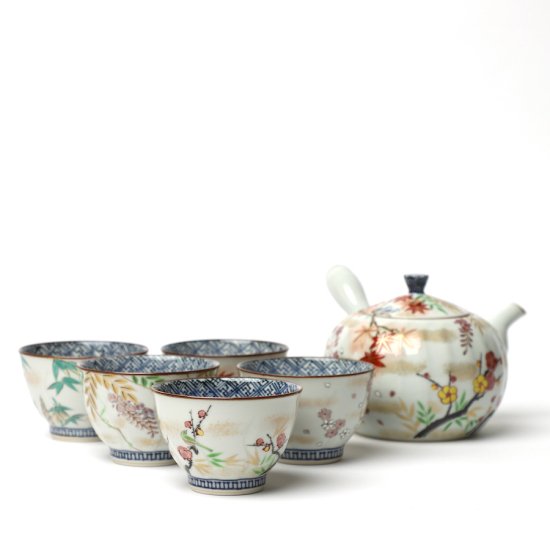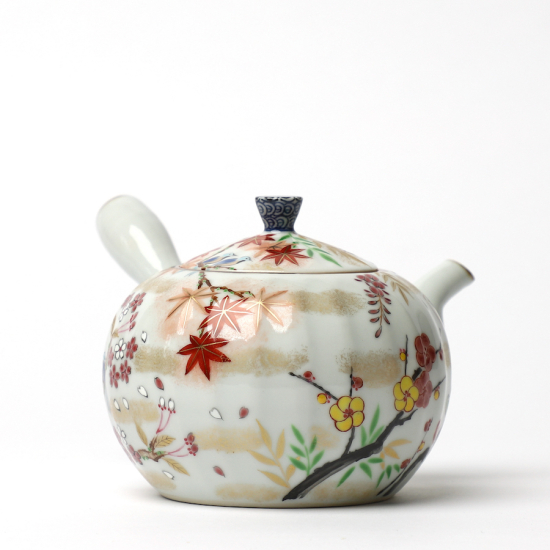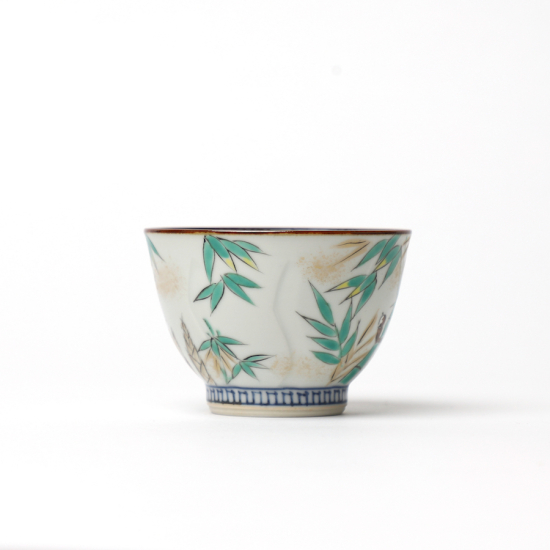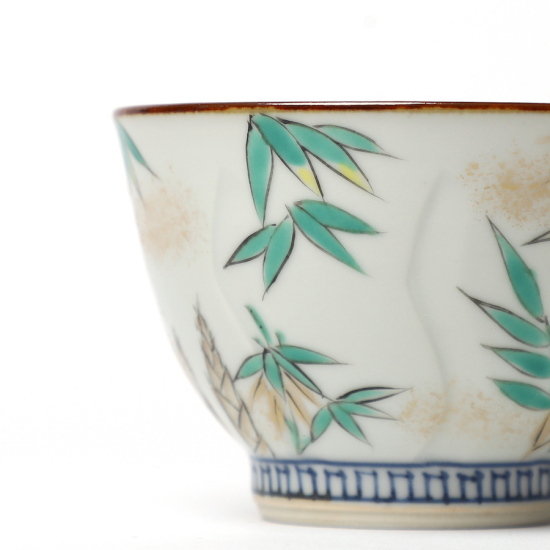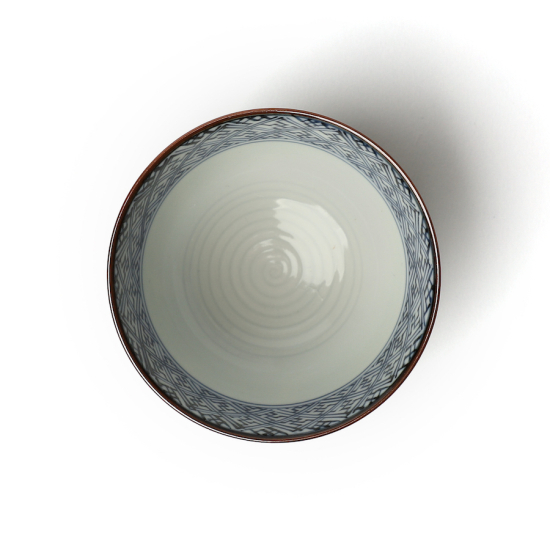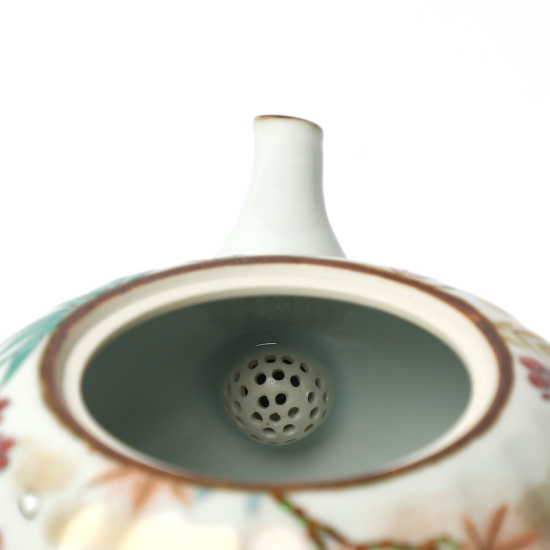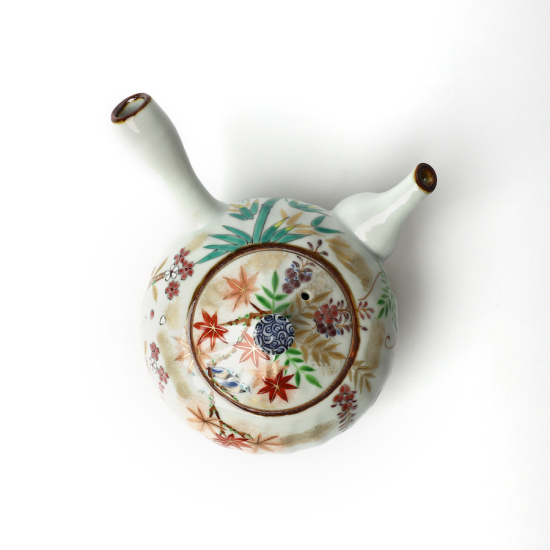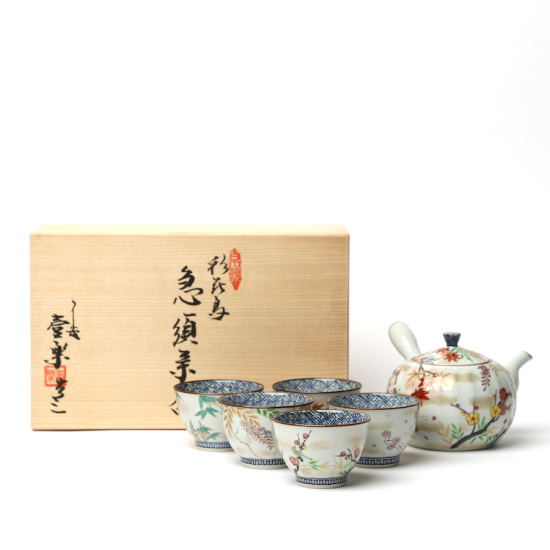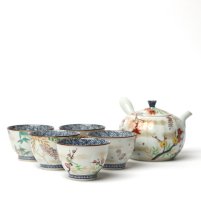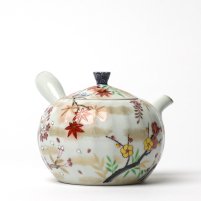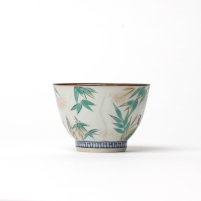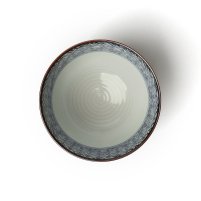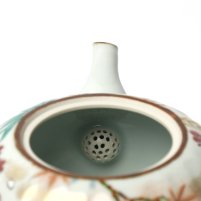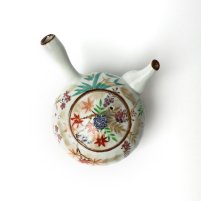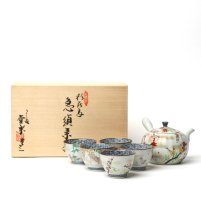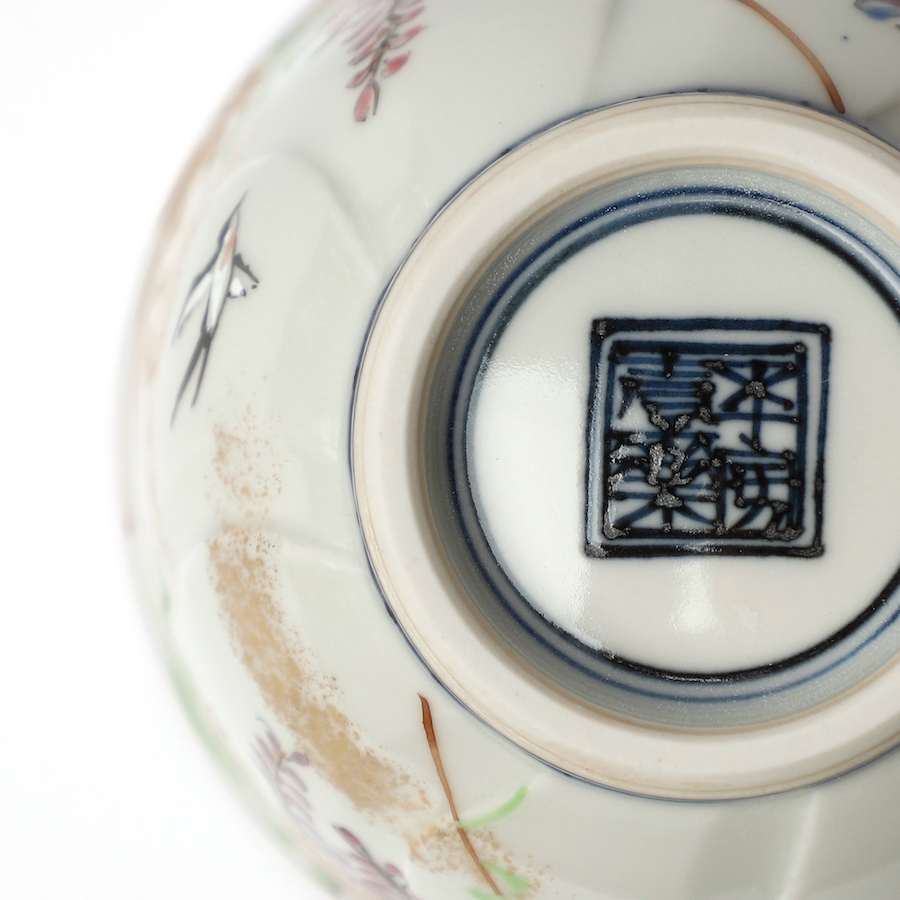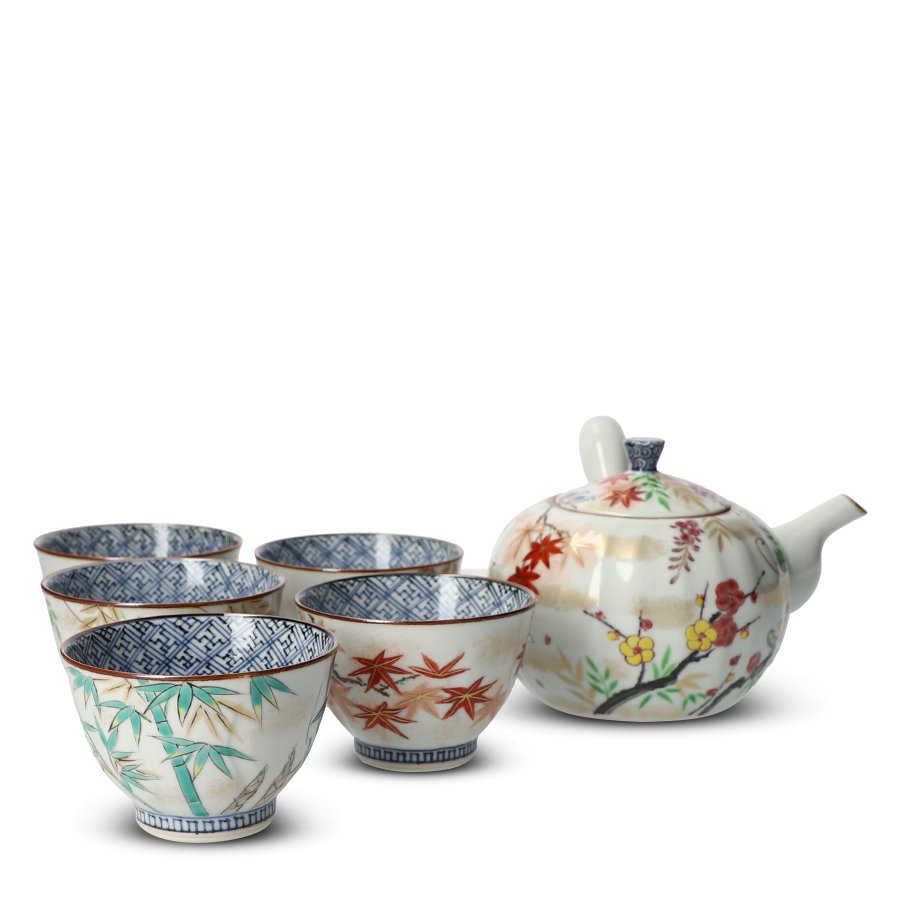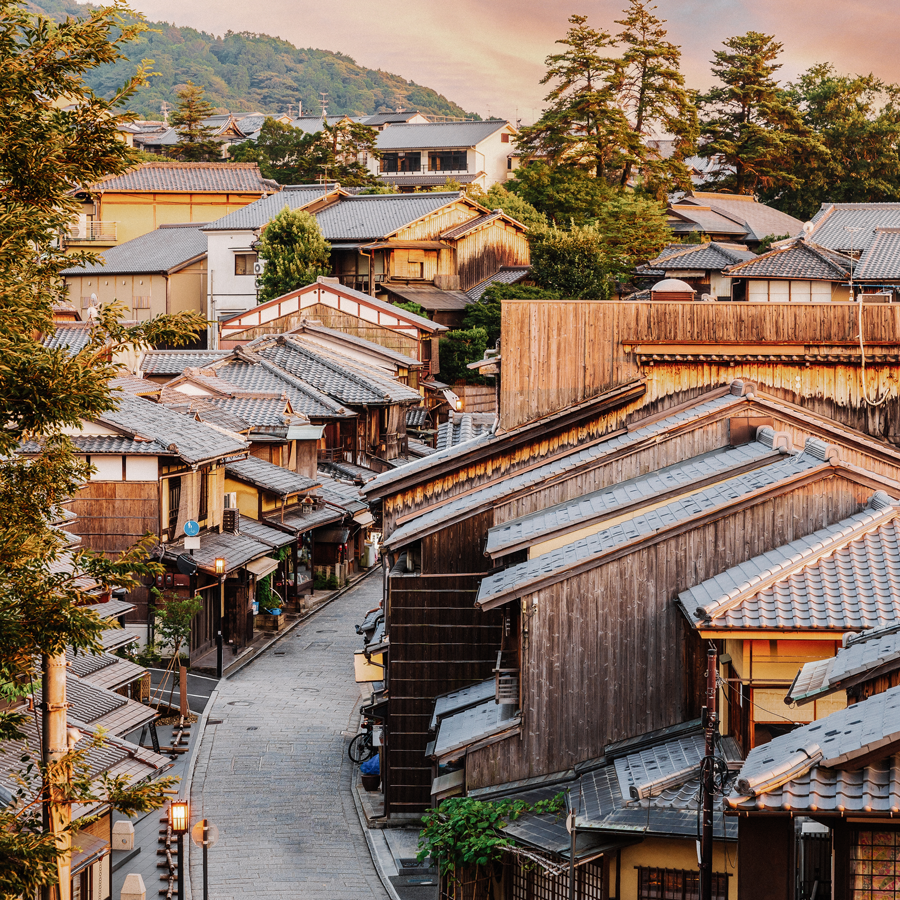Hand wash with warm water and a soft cloth or sponge – avoiding excessive rubbing. Use a mild washing-up liquid as necessary. After draining, pat dry with a towel or leave to dry naturally. Do not put in dishwasher, dryer or microwave as this may damage the glaze.
Tea Service
Irodorikacho
Ichiraku
SKU
4324
Yoshi En has recently grown out of Sunday Natural to become an independent premium tea store. As part of this transition, some products may still be shipped in Sunday Natural packaging.
A set of five porcelain teacups and Kyusu teapot adorned with colourful bird-and-flower Kachō (花鳥) painting. Handmade at the Ichiraku Kiln in Kyoto, renowned for their exemplary Kiyomizu-yaki ceramics. Comes protected in a traditional Japanese wooden box, perfect for Senchadō ceremonies or as a gift.
| Product | Tea Service: 1 Kyusu teapot + 5 Teacups |
| Ceramic Style | Kyo-/Kiyomizu-yaki |
| Origin | Kyoto, Japan |
| Studio | Ichiraku-gama 壹楽窯 |
| Volume | Teacup: 150ml Teapot: 450ml |
| Dimensions | Teacup: Ø8.5cm x 6cm Teapot: Ø12cm x 8cm (body only) |
| Material | Porcelain |
| Decoration | Bird-and-flower painting |
| Artist's mark | Signature on base |
| Packaging | Wooden box (Kiribako) |
Each item is handmade and unique, therefore sizing is approximate and paintings may differ slightly from the product photos
In stock



